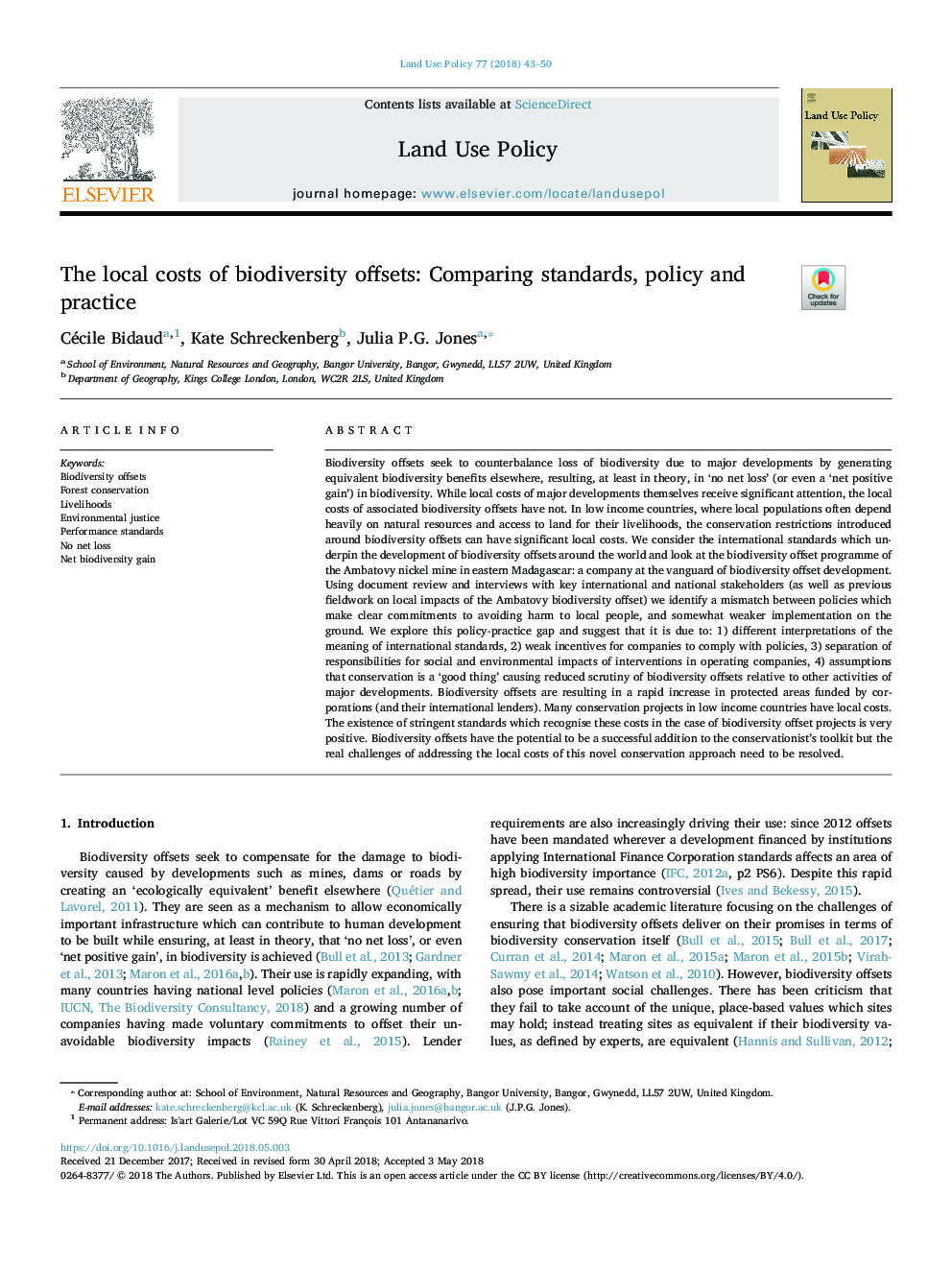| Article ID | Journal | Published Year | Pages | File Type |
|---|---|---|---|---|
| 6546110 | Land Use Policy | 2018 | 8 Pages |
Abstract
Biodiversity offsets seek to counterbalance loss of biodiversity due to major developments by generating equivalent biodiversity benefits elsewhere, resulting, at least in theory, in 'no net loss' (or even a 'net positive gain') in biodiversity. While local costs of major developments themselves receive significant attention, the local costs of associated biodiversity offsets have not. In low income countries, where local populations often depend heavily on natural resources and access to land for their livelihoods, the conservation restrictions introduced around biodiversity offsets can have significant local costs. We consider the international standards which underpin the development of biodiversity offsets around the world and look at the biodiversity offset programme of the Ambatovy nickel mine in eastern Madagascar: a company at the vanguard of biodiversity offset development. Using document review and interviews with key international and national stakeholders (as well as previous fieldwork on local impacts of the Ambatovy biodiversity offset) we identify a mismatch between policies which make clear commitments to avoiding harm to local people, and somewhat weaker implementation on the ground. We explore this policy-practice gap and suggest that it is due to: 1) different interpretations of the meaning of international standards, 2) weak incentives for companies to comply with policies, 3) separation of responsibilities for social and environmental impacts of interventions in operating companies, 4) assumptions that conservation is a 'good thing' causing reduced scrutiny of biodiversity offsets relative to other activities of major developments. Biodiversity offsets are resulting in a rapid increase in protected areas funded by corporations (and their international lenders). Many conservation projects in low income countries have local costs. The existence of stringent standards which recognise these costs in the case of biodiversity offset projects is very positive. Biodiversity offsets have the potential to be a successful addition to the conservationist's toolkit but the real challenges of addressing the local costs of this novel conservation approach need to be resolved.
Keywords
Related Topics
Life Sciences
Agricultural and Biological Sciences
Forestry
Authors
Cécile Bidaud, Kate Schreckenberg, Julia P.G. Jones,
